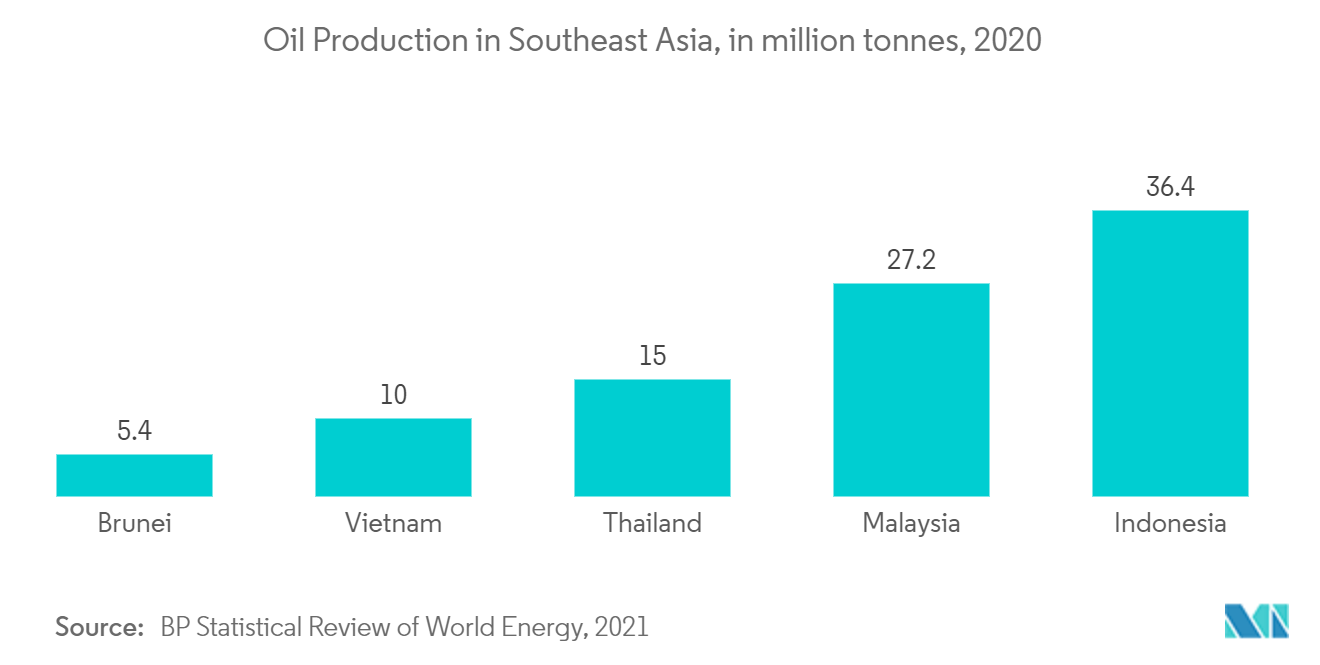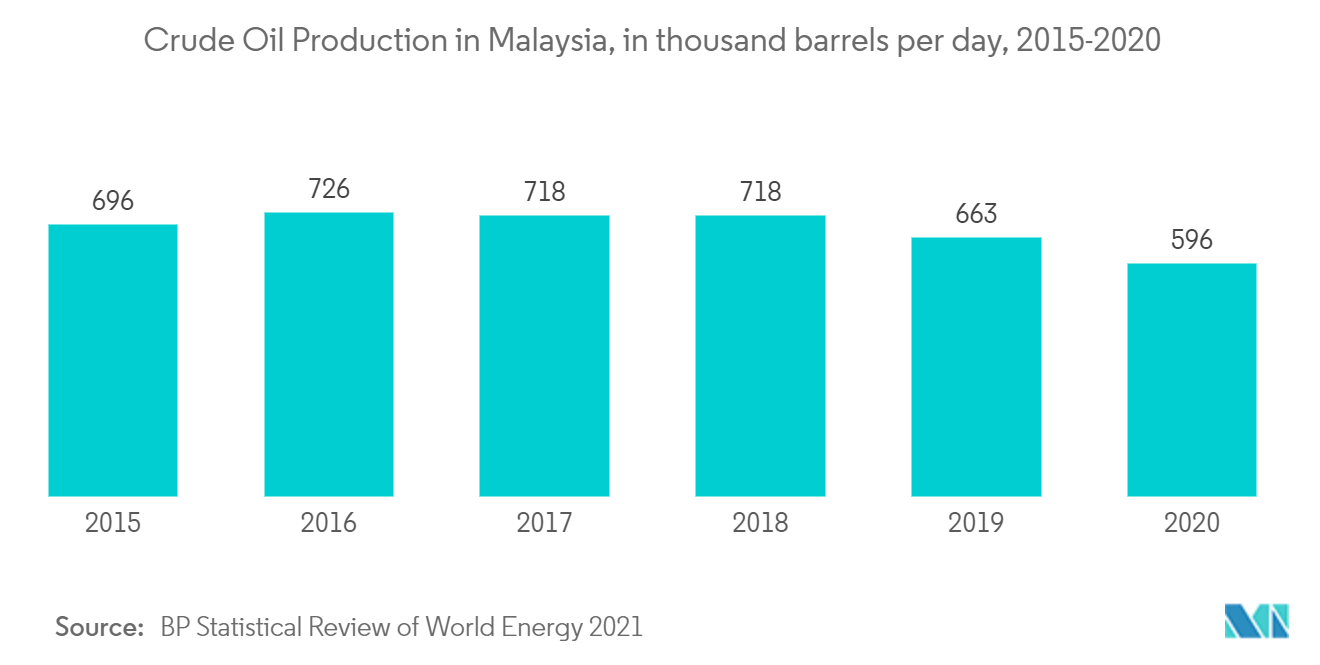Market Trends of Southeast Asia Oil and Gas Upstream Industry
This section covers the major market trends shaping the Southeast Asia Oil & Gas Upstream Market according to our research experts:
Offshore Segment to Dominate the Market
- The Southeast Asian region is a vital oil and gas producer worldwide. As per the latest data provided by Global Economy in 2021, the region held proved oil reserves of 11.83 billion barrels of oil.
- In 2020, the crude oil production in Southeast Asian countries, such as Thailand, Singapore, Indonesia, Brunei, Malaysia, and Vietnam, was around 92 million tons. The crude oil production is expected to grow as the country focuses on increasing hydrocarbon production through upstream investment and increased exploration activities.
- Investments in the oil and gas industry in major economies such as Malaysia, Thailand, and Vietnam have supported the industry growth. For instance, in 2020, the oil and gas sector received total approved investments of (Malaysian Ringgit) RM353.6 million in Malaysia. Petronas, the state-run oil company, expects (Foreign investment Decisions) FIDs to pick up in 2022 or 2023 with an estimated 10-15%.
- Moreover, significant deep-water projects are increasingly important for Southeast Asia, where new investments in oil and gas production are critical for the region to meet the increasing demand for oil and gas as the countries in the region continue to expand. Deep-water upstream assets reaching final investment approval in the region are expected to grow around 70% in 2024.
- Hence, with upcoming projects and investment flow, the segment is significantly growing during the study period.

Malaysia to Dominate the Market
- Malaysia is one of the vital oil and gas producers in the Southeast Asian region. As of January 2020, Malaysia held proven oil reserves of 3.6 billion barrels. The oil and gas sector in the country contributes around 20.0% to the country's annual GDP.
- In 2020, the crude oil production in the country was around 596 thousand barrels/day, showing a decrease from the previous volume of 663 thousand barrels/day (b/d) in 2019. The government had volunteered to cut its crude oil production by 109,000 b/d from August to December 2020 to comply with the OPEC+ agreement reached on April 15 to maintain price volatility. However, crude oil production is expected to grow as the country focuses on increasing hydrocarbon production through upstream investments and increased exploration activities.
- Investments in the oil and gas sector, particularly in the upstream segment, have supported the sector's growth. In 2020, the oil and gas sector received a total approved investment of MYR 353.6 million. Petronas, the state-run oil company, expects FIDs (Foreign Investment Decisions) to pick up in 2022 or 2023 by an estimated 10-15%.
- Moreover, the country has a few upcoming projects, including the Pegaga gas project in Block SK320, which was expected to produce gas from Q1 2022. The Kasawari gas field is expected to come on stream by 2023.
- Hence, with upcoming projects and investment flow, the country is expected to witness significant growth during the forecast period.


